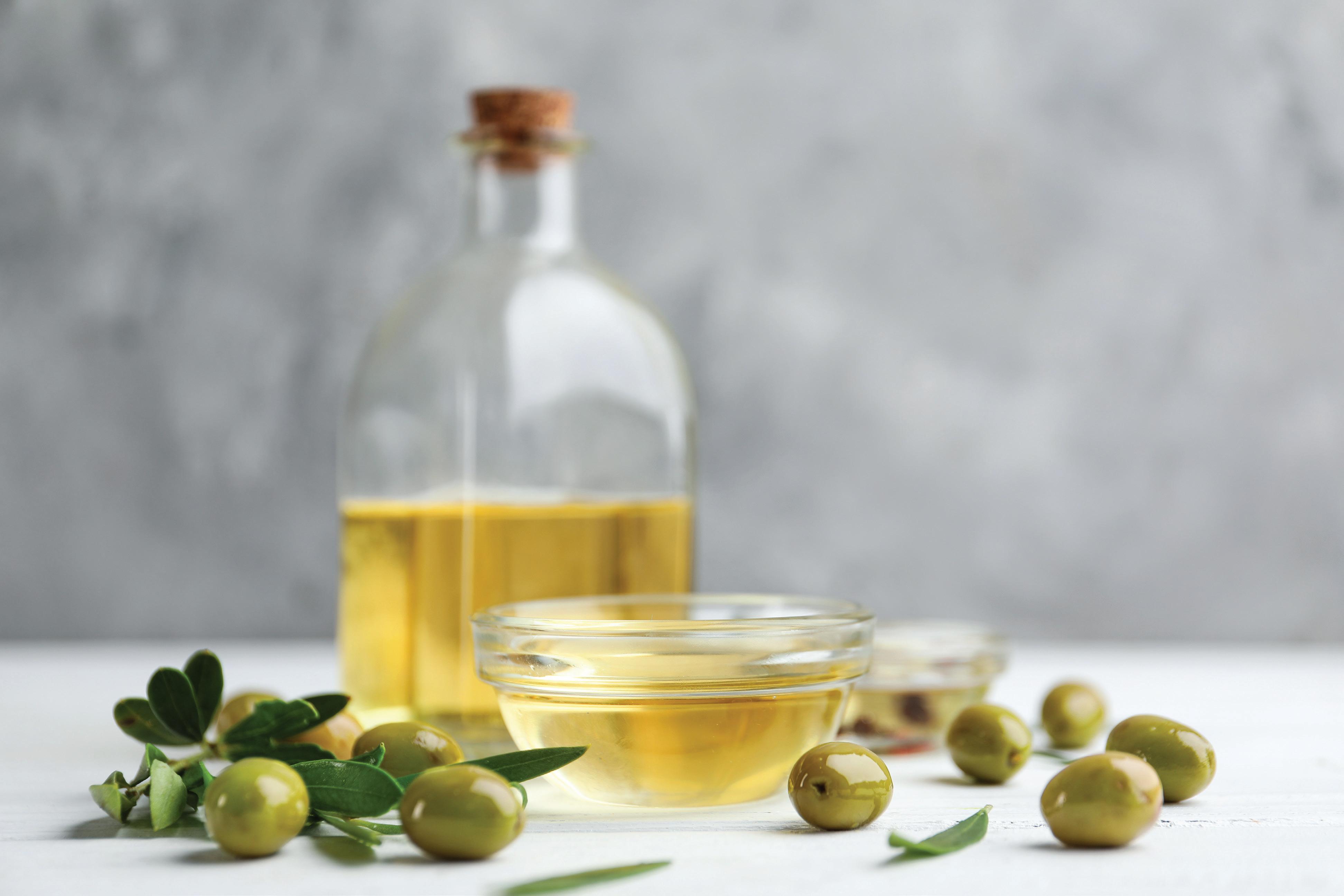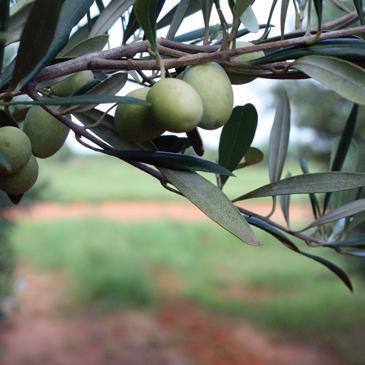

www.txaoo.org www.gotexan.org



www.txaoo.org www.gotexan.org
Americans have discovered what Italians have known for centuries. Olive oil tastes great, and research indicates that it is good for you too. Over the past 20 years, the United States’ consumption of olive oil has tripled. In 2017, the United States consumed nearly 320 thousand metric tons of olive oil, and most of that oil is imported from other states in the US or other countries.
The Texas olive industry is growing. Olive trees have been growing in the Lone Star State since the 1930s, but it wasn’t until the late 20th century that Texans began to view olive oil as a commercially viable crop. Parts of Texas have a climate similar to Central Italy, where some of the world’s finest olive oil is produced. We are now seeing results in producing a true Texas oil with the same high standards for quality.
The first experimental trial on olive tree plantings in Texas can be traced to Earnest Mortensen of the Texas Agricultural Experiment Station. A few olive trees in Dimmitt and Maverick counties reportedly have borne fruit for 80 years or more, and some historic ornamental olive trees can still be found in parts of Central and South Texas.
Over the past 10 to 15 years, olive plantings have increased in Texas, primarily southwest of San Antonio and in the Hill Country. In north and west Texas and parts of the Hill Country, freezing temperatures occur too often to allow for successful commercial olive cultivation. Extreme south Texas does not typically experience enough cool weather for olives to set fruit, and most trees there are grown as ornamentals.
(Aggie Horticulture, Texas Fruit and Nut Production; Olives)
Once again, the pioneering spirit of Texas is becoming evident. Strong-willed and determined entrepreneurs are seeing their dreams realized and their hopes bear fruit as a new Texas industry grows. The Lone Star State has a new rising star in the agricultural industry, another source of Texas pride; Texas Olive Oil.
The romance of olives and olive oil has taken root in Texas. Olive growers in Texas are feeling encouraged by the increased production of olives in their orchards and they see the future of the Texas olive industry as an exciting and fruitful one.

OXIDATION – Excessive oxidation increases the risk of heart disease, cancer and general aging. Polyunsaturated fats, like those found in most common vegetable oils encourage oxidation. In contrast, extra virgin olive oil (EVOO) contains rich amounts of monounsaturated fats that prevent oxidation and it contains a number of phenols that act as antioxidants, which will lower oxidation. This will, in turn, lower the risk of heart disease and cancer.
BODY WEIGHT - There may be some concern that because “olive oil is a fat” consuming it often will lead to weight gain. However, patients who used EVOO as part of a weight loss program lost more weight than when they went on a low-fat diet. Other studies have shown that people who use EVOO as their main dietary fat also tend to have a lower body weight and gain less weight over time. A meal containing fat leads to satiety, causing us to stop eating sooner. Additionally, meals containing fat extend the length of time it takes us to feel hungry again for our next meal. In this way, consuming EVOO helps control body weight.
BLOOD PRESSURE - Two to three tablespoons of EVOO a day have been shown to lower blood pressure. EVOO with higher phenol content has been shown to lower systolic blood pressure in men compared to olive oil with lower phenol content.
INFLAMMATION - When high levels of inflammation are measured in the blood in conjunction with illnesses like heart disease or cancer, the outcome of the disease has been less favorable. Found in some EVOO, oleocanthal is a natural anti-inflammatory agent and causes the “burning” sensation when we swallow olive oil. It works like ibuprofen to limit the production of inflammatory compounds in the body.
BLOOD LEVELS OF FASTING INSULIN AND GLUCOSE
Higher blood levels of both insulin and glucose have been related to an increased risk of heart disease and several types of cancer. Two tablespoons of EVOO a day have been shown to decrease blood levels of glucose and insulin. Besides decreasing your risk of heart disease and cancer, EVOO also improves blood glucose control for diabetics.
BLOOD COAGULATION - Blood that clots easily will increase your risk of heart disease and cerebral vascular accidents (strokes). EVOO high in phenols has been shown to inhibit blood from clotting.
Arbequina Oil or Brining Small fruit; of Spanish origin. The most popular cultivar planted in Texas to date. Oil is very sweet with a delicate almond overtone; the fruit can also be brined.
Arbosana Oil or Table Olive Spanish variety. Stronger flavored oil that is often mixed with milder oils to add flavor and increase shelf life.
Empeltre Oil Origin: Spain and Argentina. Produces an oil with sweet and aromatic flavors.
Frantoio Oil or Table Olive Medium sized fruit known mainly for high-quality oil. Has grown well in many areas of Texas yet not productive in some areas. Nutty flavor makes it a popular table fruit. Italian origin.
Koroneiki Oil Oil has a bit more pungent flavor. The oil finishes with a pleasant, peppery zing in the throat. Greek origin.
Manzanilla Table Olive Most canned black olives are this variety; widely planted in United States, Spain and Middle East. Medium oil content. In Texas, fruit is usually pressed for oil.
Maurino Oil Early maturing medium sized fruit that turns purpleblack when ripe. Produces a good quality oil.
Mission Oil or Table Olive Developed in California. Can be picked green for Spanish Green olives or brown-red for ripe olive processing. High oil content.
Pendolino Oil As a fruit-bearing tree, it performs poorly in many areas. However, it is needed as a pollenizer for Manzanilla. Italian origin.

Picual Oil Yields in Texas have been disappointing; the number one varierty in Spain for oil. Tends to be pungent and has a long shelf life.
As much as 70-80% of supermarket olive oil in the US is “fake” and adulterated with other oils.
A very green color indicates high quality olive oil.
More than 98% of the olive oils in US supermarkets are authentic. For more than 25 years, the North American Olive Oil Association has been testing samples from store shelves. Results from hundreds of brands collected each year consistently show nearly all are authentic.
Color is not an indicator of olive oil quality. Quality olive oils range in color from pale yellow to dark green depending on variables like the olive variety, where it is grown, climate and harvest timing.
“Light” or “Extra Light” olive oil is lower in calories.
Extra virgin olive oil is the only healthy type of olive oil.
All olive oils have the same calories per serving. Light or Extra Light indicates lighter color, aroma or flavor.
All olive oils are high in heart-healthy monounsaturated fat – the “good” fat. While extra virgin olive oils retain antioxidants offering added health benefits, all olive oils have more of the good fat than other common cooking oils.
Heat diminishes olive oil’s health benefits so it is best to use EVOO “raw” or straight from the bottle.
Like wine, olive oil gets better with age.
Flavor may change when heated but the health benefits remain. You can cook with all types of olive oil without losing health benefits because the smoke point is higher than most average cooking temperatures.
Olive oil, like all oils, deteriorates over time. To maintain quality, store your olive oil in a cool, dark place and use the oil within a few months once the bottle is opened.

The use of the terms “cold pressed” or “first cold-press” on an extra virgin olive oil label is intended to indicate that the oil was extracted by mechanical means without the addition of heat. The use of these terms is redundant; under the international standards now in effect around the world, in order for an olive oil to be labeled as “virgin” (including “extra virgin”) it must be extracted by mechanical means without the addition of heat (and of course, without any chemicals). To the extent these terms refers to a “press,” the term is mostly figurative - nearly all olive oil is extracted using other mechanical means, like malaxers and centrifuges, instead of presses. In today’s world, the terms “cold-pressed” and “first cold-press” have little actual significance.
- Early harvest olive oil means the olives were picked before they were fully ripened. Early harvest olive oil has a more peppery and bitter taste. Sometimes a harvest is done early as a matter of choice. But in some regions where there is a risk of early frost that could damage the trees, (e.g. in Tuscany), an early harvest may be considered a necessity.
- This means the oil was harvested and pressed at the same farm where the olives were grown.
- When a virgin olive oil is described as being “extra,” it does not mean it is “more” virgin; rather, the term indicates that the oil is a superior or premium virgin oil, meeting higher quality standards than those that apply for the ordinary “virgin” grade of olive oil.
- Most olive oil is made from a blend of different kinds of olives. Mono-varietal means that the bottle is made from olives of one type.
OLIO NUOVO - This means “new oil.” It refers to olive oil that has been recently harvested and extracted. It is a seasonal product that is only available in the fall/winter (if harvested in the Northern Hemisphere) and typically is extremely fresh, robust and flavorful.
ORGANIC - Like other forms of organic produce, organic oliv e oil means that the olives were grown without the use of chemical pesticides or chemical fertilizers.
An accredited organization needs to certify the olives as organic.
- This is a description of flavor. Robust means full-bodied flavor that pairs well with other strong flavors like tomatoes or meat. Delicate or mild olive oil goes well with fish or vegetables.
- The majority of olive oil is filtered to remove olive solids. Unfiltered olive oil uses gravity to separate the solids from the oil. Some sediment may remain.
VIRGIN - The use of the term “virgin” to describe an olive oil indicates that the oil was extracted by mechanical means only, without the addition of heat or chemicals, and that it meets the quality standards for that grade. If an olive oil is NOT described as “virgin,” it is an indication that at least some of the olive oil in the product has been refined in a process similar to the process used for producing vegetable oil. Olive oil that has been refined, by definition contains oil that is not as flavorful as virgin olive oils, but has the same desirable fatty acid composition (i.e. predominantly monounsaturated fat) as virgin oils. - North American Olive Oil Association
The standards developed by the International Olive Oil Council (IOOC) have long been regarded as the bar to reach to achieve high quality ratings among olive oils produced across the world. The IOOC has developed strict criteria to determine the quality and purity of olive oils. In general, olive oil is rated on its “free fatty acidity,” which is expressed as oleic acid content within the oil.
According to the IOOC, the international standard for extra virgin olive oil is a free fatty acid content of not more than 0.8 percent. The California Olive Oil Council (COOC) has established even more stringent standards than the IOOC. The COOC states that for an oil to be labeled as extra virgin, the free fatty acid content must not be more than 0.5 percent.
Oils from some olive ranches in Texas have exceeded even the strict standards of the COOC. Some ranches have reported fatty acid content of 0.3 percent. These test results are proving that Texas olive oil is reaching a high standard. Olive oil from Texas ranches have consistently won awards at the New York International Olive Oil Competition, the Los Angeles International Olive Oil Competition and the Les Olivalies International Competition in Paris, France. Texas olive oils have earned gold and silver awards at these prestigious competitions from across the globe.
Texas currently has in excess of 150 orchards and 5 production facilities including a mobile mill. With the recent boom in planted olive orchards and expansion to existing orchards, production infrastructure is soon to follow. The Farm-to-Table movement, consumer awareness and state-sponsored programs provide a spotlight for Texas olive oil and related products.



THE LONE STAR STATE HAS A NEW
RISING STAR

